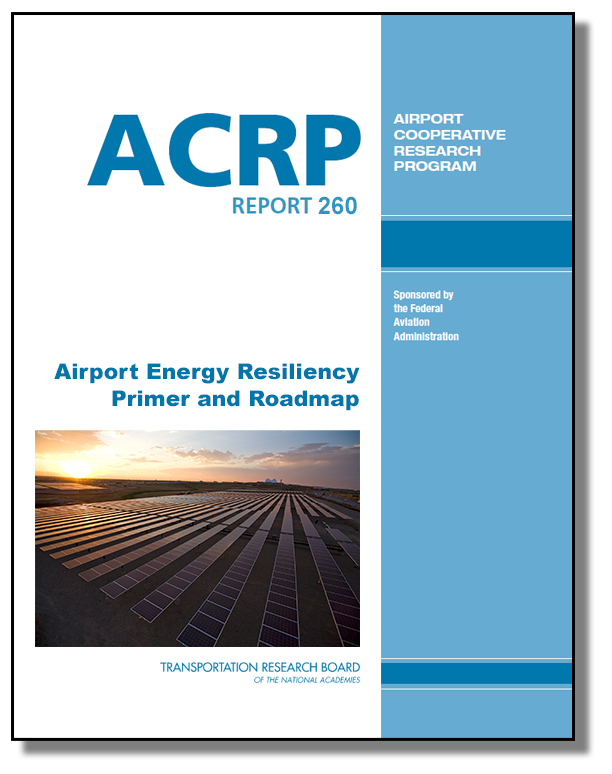Your airport has many competing priorities. Pavement rehabilitation, terminal maintenance and potential expansion, safety management systems, security plans, coordination with federal and state agencies for needed funding … the list goes on. In the end, though, an airport’s highest priority must be its ability to support its customers, from passengers and passenger and cargo operators to corporate and training flights and medical and emergency transport.
To secure the energy resources to meet its needs, airport leadership must plan and embrace the future. Depending on utility infrastructure without understanding its weaknesses can put an airport at risk of failing to meet its community’s expectations.
Generally, the airport or airports in your community are major energy users, so airport energy resiliency and sustainability efforts benefit the airport and the broader community. An airport’s geography and exposure to potential impacts from climate change will also help drive its planning efforts. These vulnerabilities must be acknowledged when considering their risks to airport operations. An airport’s community or state may have established goals related to carbon reduction, climate or energy resiliency that can only be achieved if the airport is also working to achieve those goals.
Plan now to protect your airport
An airport can establish an effective energy resiliency plan for its specific needs by developing an airport energy resiliency roadmap. A new publication called ACRP Research Report 260: Airport Energy Resiliency Roadmap, prepared by a team of researchers and experts including Hanson Professional Services, explains the process of creating a roadmap. Include this document in your library and take the first steps toward achieving energy resiliency at your airport.
Power disruption and emergency response
A community’s emergency response plan frequently involves its airport system, which plays a critical role in connecting residents with local, state and federal assistance. Energy resilient airports are better able to meet community needs during an emergency.
The consequences of not pursuing energy resiliency can be costly. According to a December 2017 article from Reuters, a large U.S. airport lost power for less than half a day, with one airline reporting an estimated revenue loss of $50 million. But with early resiliency planning efforts before a disruption, these types of situations can be avoided.
Resiliency checklist
Generally, an airport should consider four foundational goals:
- Short-term resiliency: maintenance of critical operations during natural or human-caused emergencies
- Long-term resiliency: the reliability of supply and facility preparedness for changing business models and accommodating energy demand and climate change
- Economic: stability of utility, operations and maintenance costs
- Reputational: thorough safety plan, high standard for image and brand and overall quality of customer experience
An airport’s ability to provide safety, security and operation of critical functions in an energy emergency or disruption and respond quickly to unexpected demands enables the facility and staff to meet its customers’ needs.
An airport can never be too prepared to weather emergencies or capitalize on growth opportunities. With an energy resiliency roadmap, you can safeguard your facility and position it for a productive future.
Return to Ascend in July as we continue to explore energy resiliency at airports.
For more information, contact Hanson Senior Project Manager and Aviation Planning Lead Susan Zellers, P.E., at szellers@hanson-inc.com or Aviation Business Development Director, Vice President Kevin Fuhr at kfuhr@hanson-inc.com.